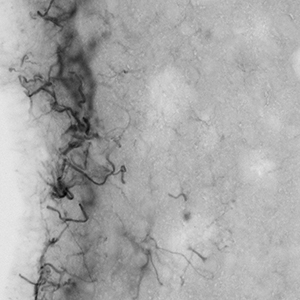 Smart Citations
Smart CitationsSee how this article has been cited at scite.ai
scite shows how a scientific paper has been cited by providing the context of the citation, a classification describing whether it supports, mentions, or contrasts the cited claim, and a label indicating in which section the citation was made.
Glyphosate, AMPA and glyphosate-based herbicide exposure leads to GFAP, PCNA and caspase-3 increased immunoreactive area on male offspring rat hypothalamus
Glyphosate, aminomethylphosphonic acid (AMPA), and glyphosate-based herbicides altered the neuroendocrine axis, the content of brain neurotransmitters, and behavior in experimental animal models. Glyphosate alone, AMPA or Roundup® Active were administered to postpartum female rats, from P0 to P10, and their water consumption was measured daily. The immunoreactivity for glial fibrillary acidic protein (GFAP), proliferating cell nuclear antigen (PCNA) and caspase-3 was measured in the anterior, medial preoptic, periventricular, supraoptic and lateroanterior hypothalamic nuclei of P0-P10 male pups after exposure, via lactation, to these xenobiotics. Puppies exposed to glyphosate had a moderate level of GFAP with no overlapping astrocyte processes, but this overlapping was observed after Roundup® Active or AMPA exposure. After being exposed to Roundup® Active or AMPA, PCNA-positive cells with strong immunoreactivity were found in some hypothalamic nuclei. Cells containing caspase-3 were found in all hypothalamic nuclei studied, but the labeling was stronger after Roundup® Active or AMPA exposure. Xenobiotics significantly increased the immunoreactivity area for all of the markers studied in the majority of cases (p<0.05). AMPA or Roundup® Active treated animals had a greater area of PCNA immunoreactivity than control or glyphosate alone treated animals (p<0.05). The effects observed after xenobiotic exposure were not due to increased water intake. The increased immunoreactivity areas observed for the markers studied suggest that xenobiotics induced a neuro-inflammatory response, implying increased cell proliferation, glial activation, and induction of apoptotic pathways. The findings also show that glyphosate metabolites/adjuvants and/or surfactants present in glyphosate commercial formulations had a greater effect than glyphosate alone. In summary, glyphosate, AMPA, and glyphosate-based herbicides altered GFAP, caspase-3, and PCNA expression in the rat hypothalamus, altering the neuroendocrine axis.
Altmetrics
Downloads
Ethics Approval
This study was approved by the Research Commission of the Universidad de Santander (Bucaramanga, Colombia) under act n. 009-VIISupporting Agencies
Ministerio de Ciencia y Tecnología (MINCIENCIAS) from Colombia (129977758110)How to Cite

This work is licensed under a Creative Commons Attribution-NonCommercial 4.0 International License.
PAGEPress has chosen to apply the Creative Commons Attribution NonCommercial 4.0 International License (CC BY-NC 4.0) to all manuscripts to be published.








